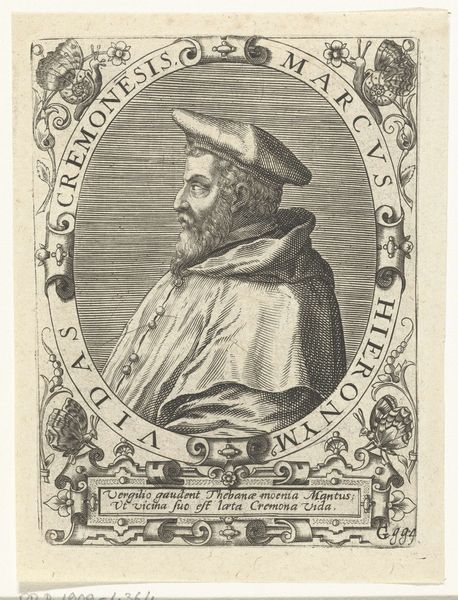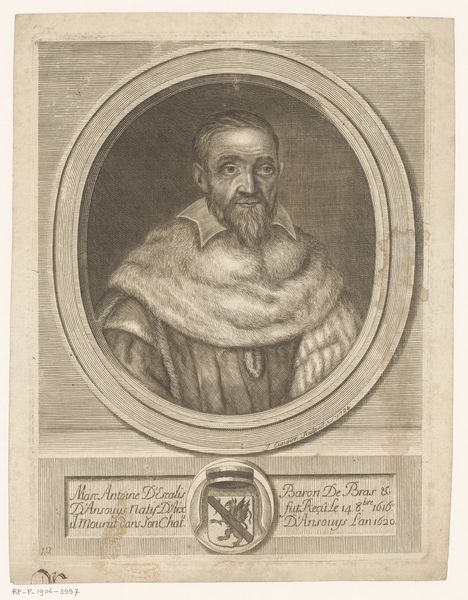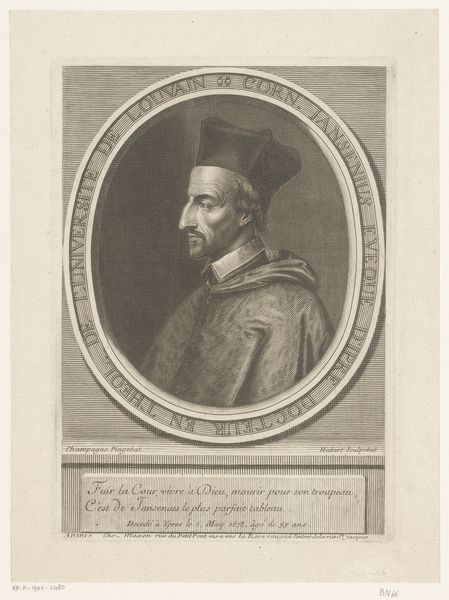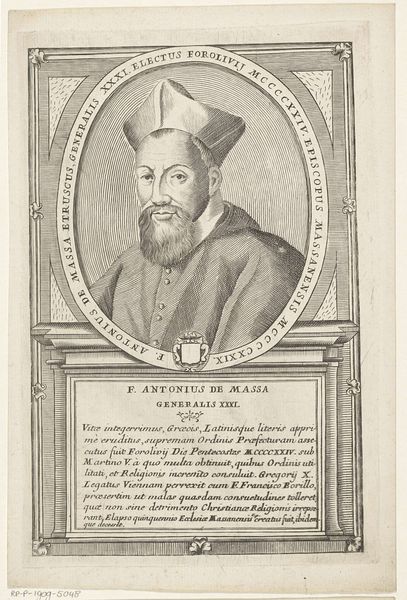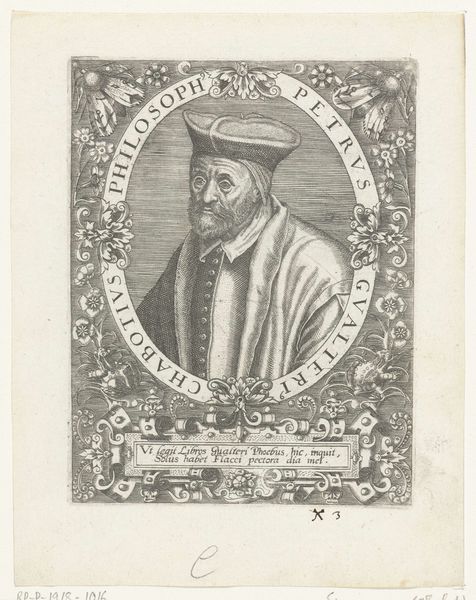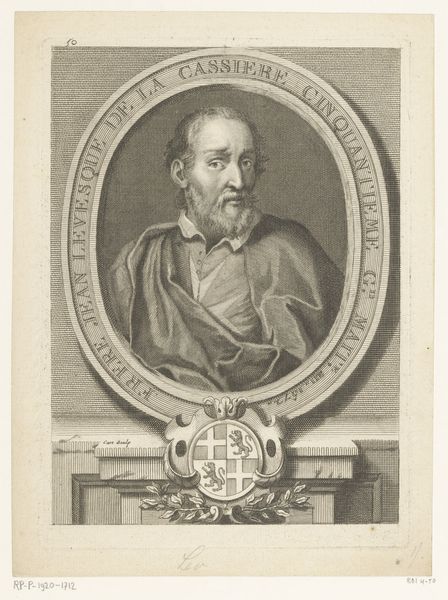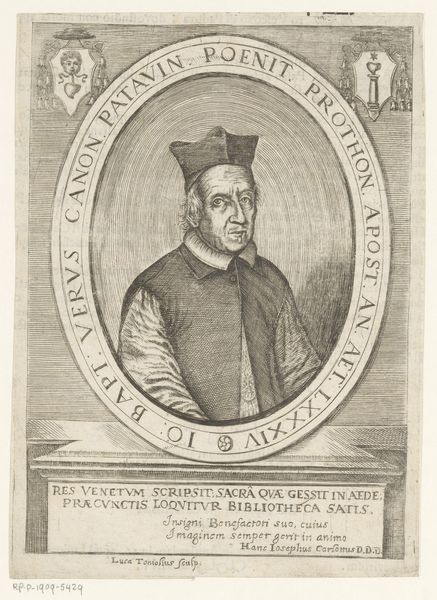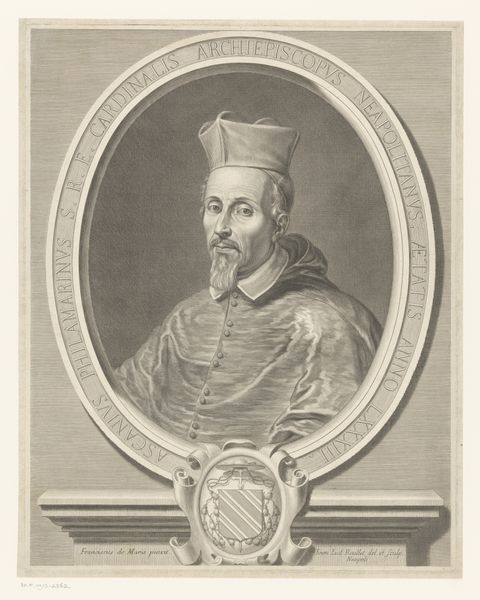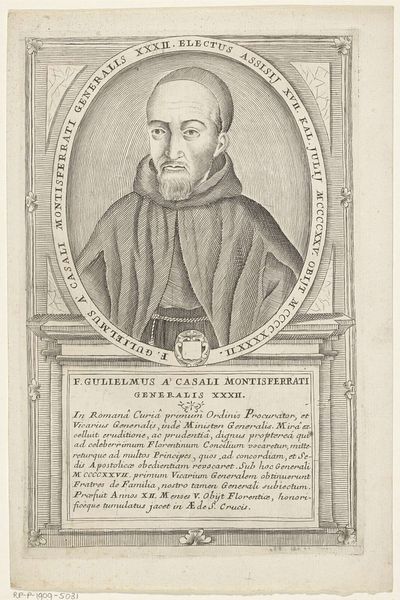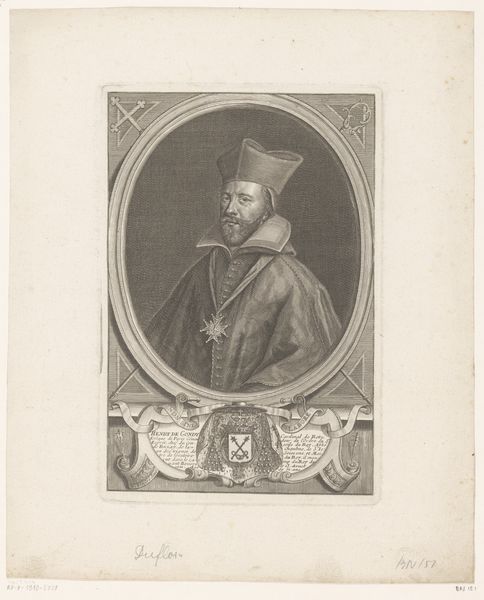
print, engraving
#
portrait
#
baroque
# print
#
old engraving style
#
academic-art
#
engraving
Dimensions: height 146 mm, width 96 mm
Copyright: Rijks Museum: Open Domain
Editor: So, here we have "Portret van Louis I, kardinaal van Guise," a print by Thomas de Leu, dating somewhere between 1576 and 1614. It has such a stark, linear quality because it is an engraving. What jumps out at you when you look at it? Curator: Well, immediately I think about the material process involved. The engraving suggests a very specific kind of labor – skilled craftsmanship, meticulous attention to detail. How does the choice of printmaking as a medium, with its potential for reproduction, influence the accessibility and consumption of this portrait? It speaks volumes about the Cardinal's image, wouldn’t you agree? Editor: I see your point! I had not considered it. It makes me wonder about its impact on contemporary audiences... Were prints like these a common commodity, or were they more exclusive to a certain social sphere? Curator: Excellent question! Consider the economic structures at play. Who commissioned this print, and for what purpose? Was it intended as propaganda, a symbol of status, or perhaps something else? Furthermore, how does the materiality of the print itself— the paper, the ink— impact our understanding of its value and meaning? What type of patronage supported its production and dissemination? Editor: That definitely shifts my perspective. Now, it seems less about just representing the Cardinal's image and more about understanding the whole industry surrounding his image, from creation to circulation. I will make sure to research about that. Thank you! Curator: Indeed. Analyzing the material conditions provides valuable insights into the Cardinal’s role and the social dynamics of the period. This goes far beyond the simple depiction of the subject.
Comments
No comments
Be the first to comment and join the conversation on the ultimate creative platform.
